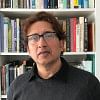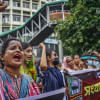A dangerous time for history

Globally, it is not a good time for the profession of history. Governments around the world are increasingly trying to control what could or could not be taught about their past. Opportunities to see history as an open-ended mode of inquiry into the past are diminishing. Dominant groups or invested parties are stifling alternative historical views with the dogmatic belief that such views pose a threat to their power base or ideological foundation. Teaching history – especially of people who have long been subjugated and oppressed, or of contested issues of the past – has indeed become a vexing political challenge.
Think, for instance, about the complicated history of slavery in the US. The 1619 Project, The New York Times Magazine initiative that began in August 2019 to mark the 400th anniversary of the beginning of American slavery, became a right-wing target from the outset. The project sought "to reframe the country's history by placing the consequences of slavery and the contributions of black Americans at the very center of our national narrative," with the hope that it would inspire a more granular and holistic national conversation on racial justice. Instead, conservative backlash was swift.
Then, in 2020, President Donald Trump formed a commission to write a triumphalist counter-history, The 1776 Report, to emphasise the "core principles of the American founding and how these principles may be understood to further enjoyment of 'the blessings of liberty'." In other words, teach "patriotic education." Inevitably, conservative states passed new legislation adopting draconian measures to regulate how the nation's teachers can discuss racism and issues of systemic inequities in the classroom.
During these anxious times, the epicentre of conservative fury has been what is known as critical race theory (CRT). What is CRT? It is essentially an academic concept to understand and explain how racism and other exclusionary practices plague US-American social, cultural, judicial, financial, and educational systems. An author explains, "Simply put, critical race theory states that US social institutions (e.g. the criminal justice system, education system, labour market, housing market, and healthcare system) are laced with racism embedded in laws, regulations, rules, and procedures that lead to differential outcomes by race. Sociologists and other scholars have long noted that racism can exist without racists."
These are not easy topics to teach. They pose highly divisive questions. What would be the role of current governments and institutions to right the wrongs of the past? How does a teacher discuss painful histories of racial violence in the classroom, particularly in middle and high schools, without traumatising young students or burdening them with moral guilt? The unease and discomfort these questions cause often become a pretext for not teaching about race at all or banning such teaching altogether. Virginia Governor Glenn Youngkin favours banning such topics, arguing that CRT instructs "students to only view life through the lens of race and presumes that some students are consciously or unconsciously racist, sexist, or oppressive, and that other students are victims." Governors and lawmakers in Idaho, Iowa, Oklahoma, Arkansas, Tennessee, Florida, and New Hampshire have banned teaching CRT in their states' K-12 classrooms. The ban is in progress in 16 other states.
Let's move south. When in office, Brazil's former President Jair Bolsonaro, a former army officer, sought to reframe the brutal history of the country's 1964 military coup and the dictatorship that it spawned. His regime orchestrated the portrayal of the coup as a "democratic revolution," falsely sanitising the country's deep wound to advance an ultra-nationalist political agenda. History was weaponised to brainwash the people of Brazil, outraging many of those who lost loved ones to torture and murder during the time of military autocracy.
In South Asia, the government of Prime Minister Narendra Modi has co-opted history as the most potent political tool to create a Hindu nationalist image of India. He appointed a committee of scholars to "rewrite the history of the nation." One of the key tasks of the committee was "to use evidence such as archaeological finds and DNA to prove that today's Hindus are directly descended from the land's first inhabitants many thousands of years ago and make the case that ancient Hindu scriptures are fact not myth." The neo-Brahmanism of this exclusionary political intention is unmistakable: how to reframe India as "a nation of and for Hindus." What is being sacrificed at the altar of this ultra-nationalist machination is the rich tapestry of multiculturalism, histories of multi-faith, multi-ethnic coexistence, and migration that have historically defined India.
An essential part of Modi's nationalist agenda is the Central Vista Redevelopment Project, the controversial USD 1.8 billion urban scheme seeking to redevelop 86 acres of land along what has long been viewed as Delhi's defining urban axis – Rajpath – that terminates in the Rashtrapati Bhavan (1927) designed by British imperial architect Edwin Lutyens. A key goal of this mammoth urban project is to "Indianise" the image and experience of the capital's political heartland. The India Gate memorial now has a new companion: a 28-foot tall statue of Indian independence figure Subhas Chandra Bose.
During the 2022 inauguration of the project's first phase, it was announced that Rajpath would be renamed as Kartavya Path. The word "kartavya" is found in ancient inscriptions commonly written in Sanskrit, Prakrit or Dravidian languages. The centrepiece of the ambitious Central Vista project is the new parliament building that would be the symbol of 21st-century India – or rather Modi's India.
There is nothing wrong in postcolonial nation-states trying to rediscover their heritage as a way to showcase their new aspirations of nationhood. But trouble begins when that "rediscovery" is weaponised to fortify narrow and jingoistic ambitions of a dominant group within the nation-state.
In the post-truth age, history has become a political tool to advance megalomaniacal, ultra-nationalist, and pro-oligarchy agendas. The best resistance to the abuse, misuse, and distortion of history is to develop an evidence-based, collective consciousness of historiography, which is – simply put – the writing of history.
How are we doing in Bangladesh in terms of history and its awareness? How do we assess the quality of history teaching in our schools? Are we creating a learning environment in which to champion a fact-based history pedagogy? Good historians critically examine sources, select authentic materials from those sources, and synthesise those materials into a narrative that itself must always be subject to critical inquiry. To do that, the historian must be dispassionate and able to resist the lure of hagiography, arguably a national disease of the Bangalee character.
Our students deserve to learn from good histories of our land and the complex evolution of its people, their amalgamation, their political thoughts, and their cultural formation, none of which are straightforward or self-evident truth. A competent and unbiased historian interprets the processes through which people develop their worldviews, identities, and perceptions of culture and politics.
Our students should be able to admire Rabindranath Tagore and Kazi Nazrul Islam, while also subjecting them to multidisciplinary and critical research inquiries. The same should be for Siraj ud-Daulah, Gandhi, Bangabandhu, and Lalon Fakir. We can learn from great figures of history only when we research them. Deifying them does not produce enduring historical knowledge. Our students have the right to be patriotic – not sartorially, but introspectively – after reading a good history of 1971, while also critically learning from its complex entanglements with regional, global, and Cold War politics.
We can protect ourselves from the abuse of history only when we develop a critical consciousness of it as a national character.
Adnan Zillur Morshed, PhD, is an architect, architectural historian, urbanist, and professor. He teaches at the Catholic University of America in Washington, DC, and serves as executive director of the Centre for Inclusive Architecture and Urbanism at Brac University.

 For all latest news, follow The Daily Star's Google News channel.
For all latest news, follow The Daily Star's Google News channel. 












Comments